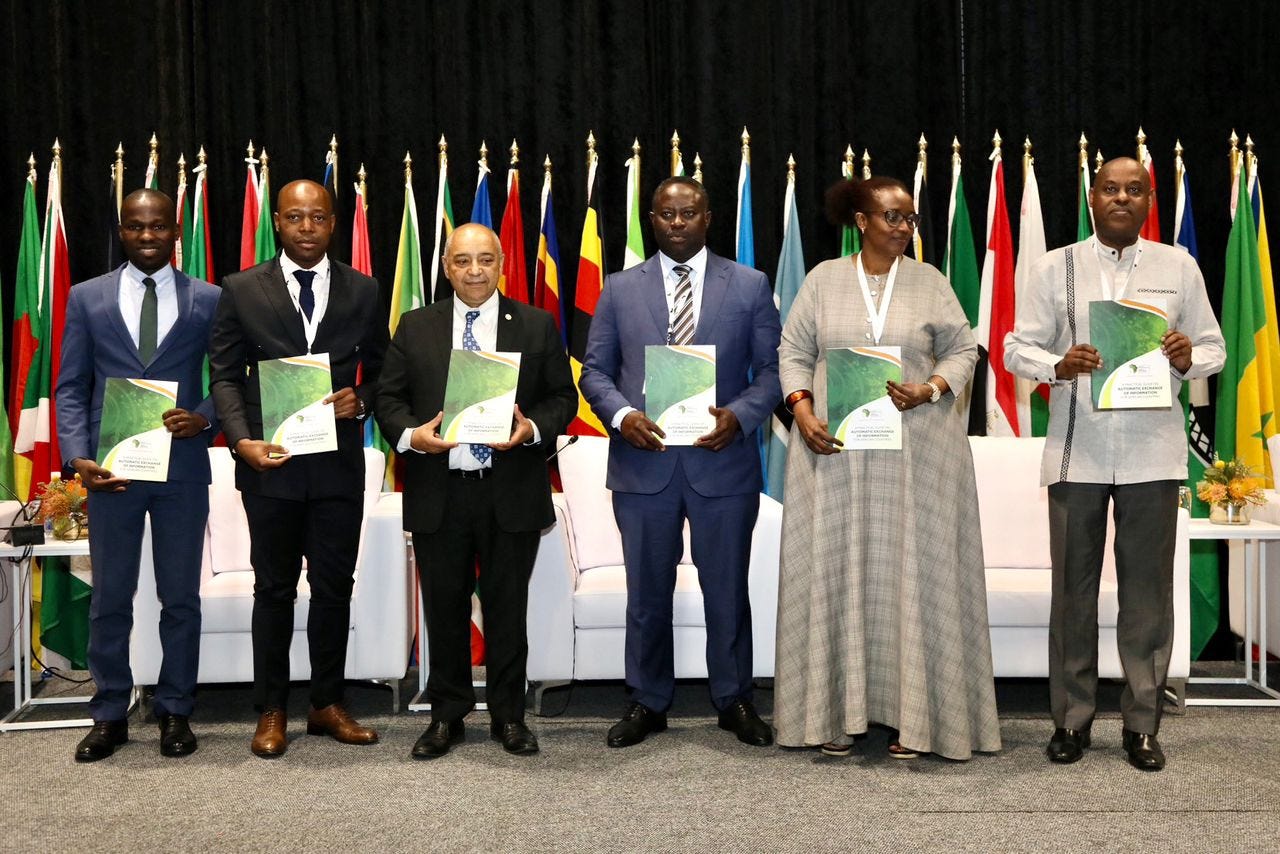ATAF Launches Practical Guide on Automatic Exchange of Information for African Countries
For additional details and information on the "Practical Guide on Automatic Exchange of Information for African Countries," please refer to ATAF's official resources and communication channels.

Cape Town, South Africa - The African Tax Administration Forum (ATAF) unveiled its groundbreaking "Practical Guide on Automatic Exchange of Information (AEOI) for African Countries" during the annual meetings held in Cape Town, South Africa, writes Winston Mwale.
This practical guide, developed in collaboration with the Organization for Economic Cooperation and Development (OECD) Committee on Fiscal Affairs, seeks to empower African nations in navigating the complexities of AEOI, a global standard introduced in 2014 and subsequently adopted by numerous countries worldwide.
ATAF's publication serves as a valuable resource for African countries that find themselves in one of three distinct scenarios.
These scenarios encompass nations in the exploratory phase, seeking comprehensive insights into the policy and practical considerations before formalizing their AEOI commitment. The guide also caters to countries that have already committed to AEOI but need assistance in building the necessary infrastructure or assessing their progress.
Finally, it benefits countries already engaged in information exchange but desire to optimize their post-exchange benefits.
The practical guide is organized into several segments to provide an all-encompassing view of AEOI for African nations. The first section offers an in-depth overview of AEOI and the existing landscape among African countries.
It addresses common challenges and potential obstacles related to the implementation of the Common Reporting Standard (CRS) for AEOI, aimed at enabling decision-makers, international organizations, and standard-setting bodies to diagnose issues and formulate practical solutions.
The second segment emphasizes the significance of establishing a compelling business case to support decision-making at the highest levels of government. It underscores the importance of leveraging international commitments, which, when activated, create a solid foundation for transitioning from political commitment to practical AEOI implementation within tax administrations.
Additionally, this section explores the potential revenue gains and supplementary benefits arising from AEOI implementation.
The third segment delves into the building blocks for CRS AEOI implementation, which inform the activities in the CRS AEOI roadmap and implementation plan. Recognizing the persistent concern about demonstrating the cost and benefit of AEOI since its inception in 2014, this section identifies specific cost centers and benefits associated with AEOI implementation.
The final focus of the practical guide centers on the hallmarks of good governance and best practices already in place within tax administrations. The goal is to reinforce and streamline the adoption of CRS AEOI into the compliance spectrum of tax administrations.
This entails mainstreaming AEOI into risk identification and management tools, audit, investigation, enforcement, prosecution, and debt management.
All these efforts must align with the international and domestic legal frameworks underpinning the access and exchange of CRS AEOI information.
In pursuit of the successful implementation of CRS AEOI, ATAF and the OECD Global Forum, along with other development partners, have established a comprehensive technical assistance program and tools accessible to member countries.
These resources aim to assist in translating the key recommendations of the practical guide into action and enabling countries to achieve a satisfactory level of CRS AEOI implementation, thereby reaping the benefits of this initiative.
This practical guide is a critical resource in enhancing financial transparency and cooperation among African nations in their commitment to international tax standards.
For additional details and information on the "Practical Guide on Automatic Exchange of Information for African Countries," please refer to ATAF's official resources and communication channels.
*Download the guide below:



